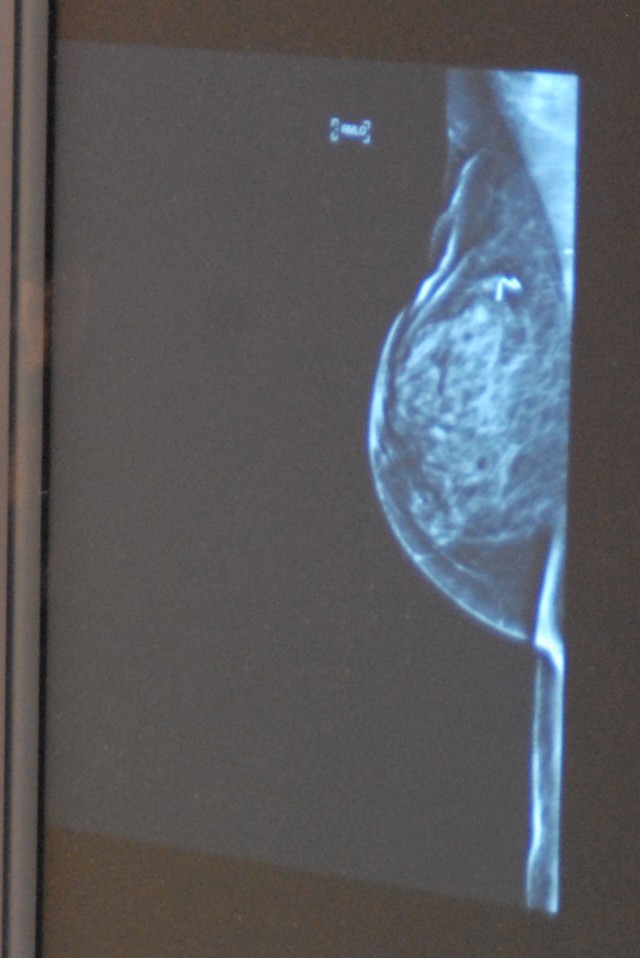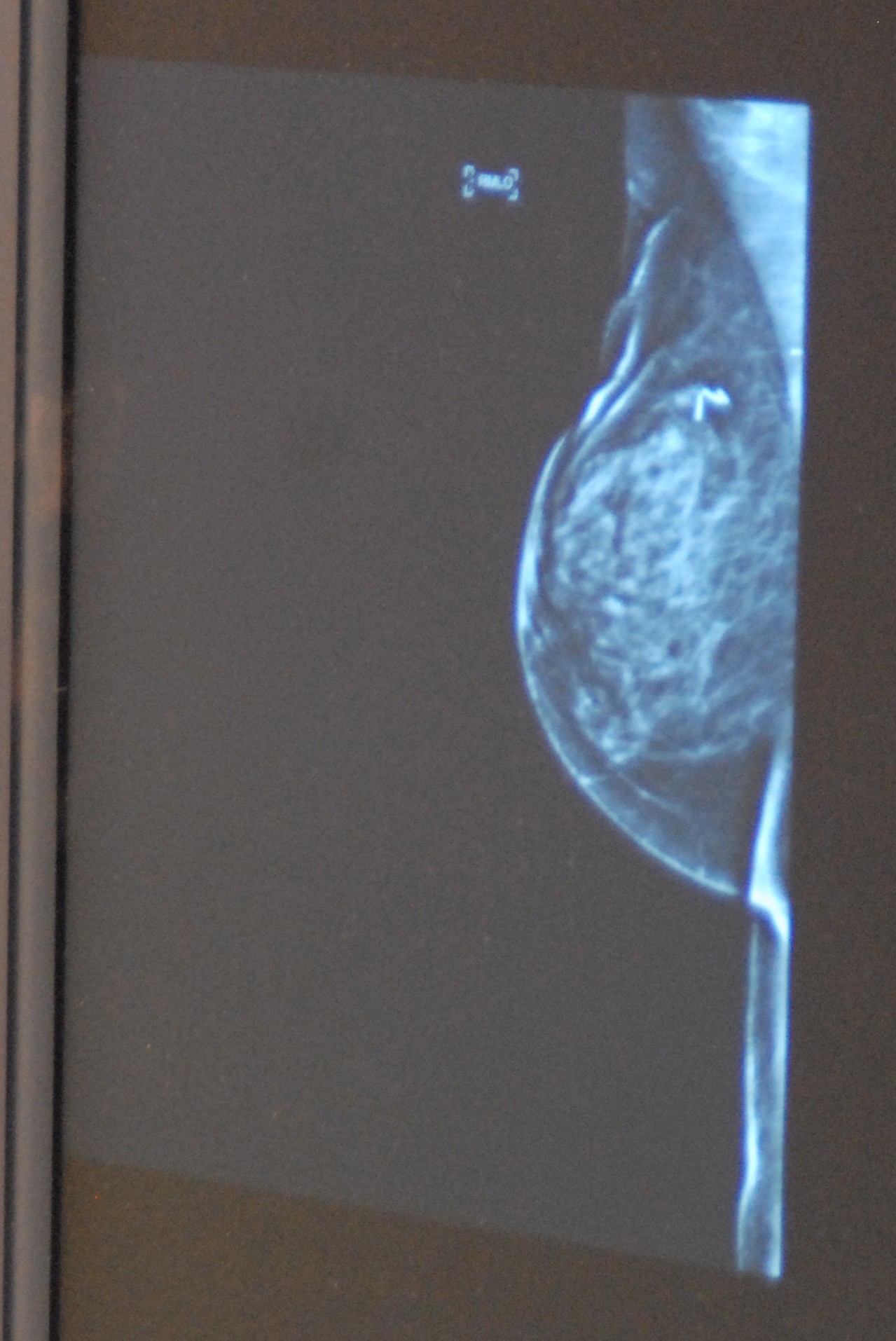According to the Centers for Disease Control and Prevention, more than 191,000 American women were diagnosed with breast cancer in 2006 making it second only to skin cancer for the most common form of cancer in women. In addition, more than 40,000 women died from breast cancer, second only to lung cancer.
While there has been much debate recently about the efficacy of mammography, it is a fact that breast cancers are discovered earlier when patients follow a regular schedule of mammography.
Fort Knox's Ireland Army Community Hospital recently took another step to replace its standard radiographic mammography with a newer digital machine. According to Maj. (Dr.) Eva Smietana, the radiology chief at IACH, the hospital spent approximately $600,000 to install the machine, build the mammography suites, and obtain a monitor for reading the 300 digital studies (on average) performed each month.
"This is a significant improvement in our services," explained Col. (Dr.) Ronald Place, the commander of IACH. "The digital mammography equipment update and suite renovation are the initial efforts in our ongoing process to assess the needs of our changing beneficiary population, bring the absolute best practices and state of the art equipment to our current facility, and continue our efforts for replacing the hospital."
"The advantage of digital mammography is that it's been shown to have a better sensitivity on younger women, and those with dense breast tissue," Maj. Smietana said. "With the increased sensitivity, there are higher detection rates of breast cancer. Although we can't say that there is a decreased mortality yet from breast cancer, it is implied."
In addition, Maj. Smietana said she reads the digital studies in the room that adjoins the one where the studies are performed, allowing her to show patients results quickly and point out any findings. The patients are probably not aware of any difference in procedures or views, which are essentially the same as film studies.
The radiology technicians who perform the digital mammograms said that most women don't realize the new machine is any different until they are informed by the technicians. Some women, however, said when they were scheduling their mammograms, they preferred to wait until the digital machine was available.
Dr. Smietana is deploying soon, but her fellow mammographers Maj. (Dr.) Tina Mascarenhas and Dr. Mike Tate will take up the slack while Dr. Smietana is gone. Both are trained and experienced in reading mammography studies.
"Digital mammography takes longer to read; there's a learning curve associated with it," she explained. "However, it's not as likely to be lost as a film study."
Patients who need to schedule a mammogram should talk with their primary care providers for referrals to the IACH digital mammography clinic.
Extensive information about breast cancer is available on the Internet; for a place to start, see http://www.cdc.gov/cancer/breast/statistics/.


Social Sharing